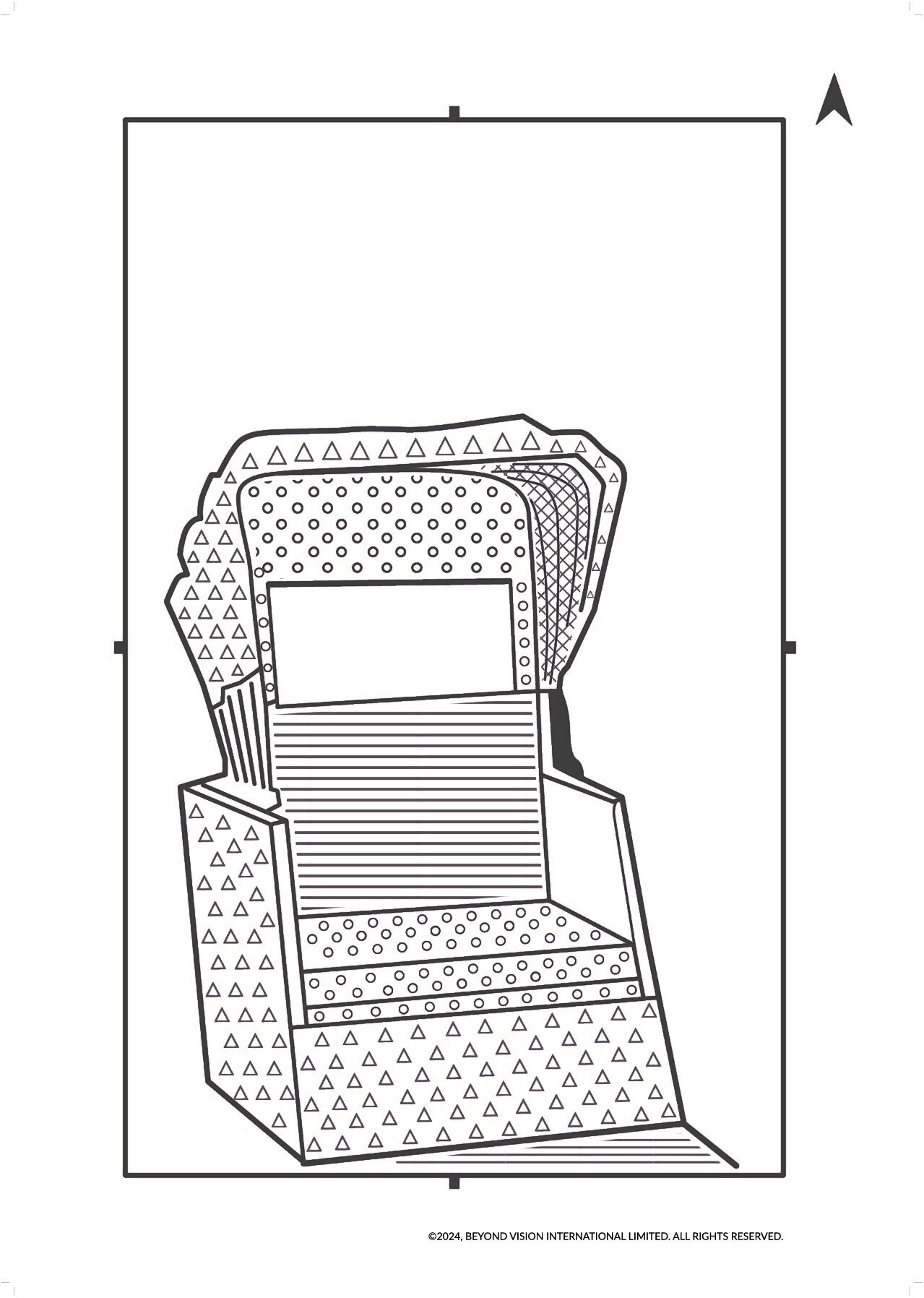Trishaw Rider - The Trishaw
Starting from the top of the tactile graphic, you will first encounter a thin row of triangle patterns representing the chrome-yellow hood of the trishaw. When pulled down, this provides the passenger with a sense of privacy as well as shelter from the weather.
As you move your finger downwards, you will come across circle patterns that symbolise the orange-red inner panel of the trishaw cabin. Below this, the smooth horizontal rectangle represents a hollow space, which allows for ventilation within the cabin.
Under the rectangle, horizontal lines represent the olive green backrest of the trishaw. Connected to the backrest at a 90 degree angle, the circle patterns signify the dark red colour of the seat, with its edges painted in an earthy yellow.
In front of the seat base, thick lines form a rectangular frame, representing the metal foot bar of the trishaw. It is where the trishaw rider rests his feet in the painting. To the right, a circular frame with radial patterns depicts the trishaw’s cropped front wheel, positioned at the corner of the painting.
A trishaw consists of two parts: the open passenger seat depicted in this painting, and a bicycle, which is typically welded to its right. The use of trishaws grew in the 1940s, especially after the Japanese Occupation when petrol was scarce, as a cheap and convenient mode of transport. However, the trishaw industry began to decline from the mid-1950s with the introduction of multiple government regulations and rising number of motor vehicles. Can you imagine what riding a trishaw through the streets of 20th-century Singapore would feel like?
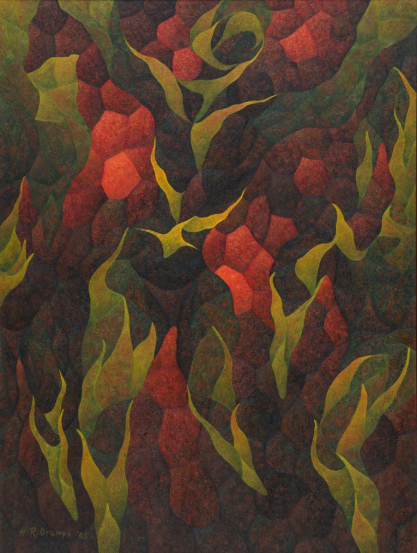
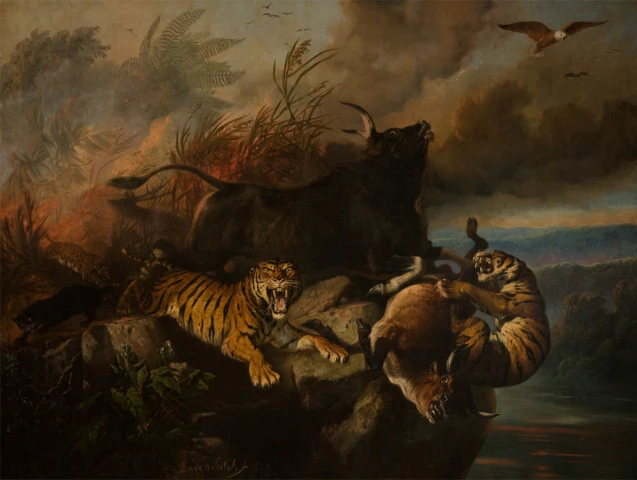
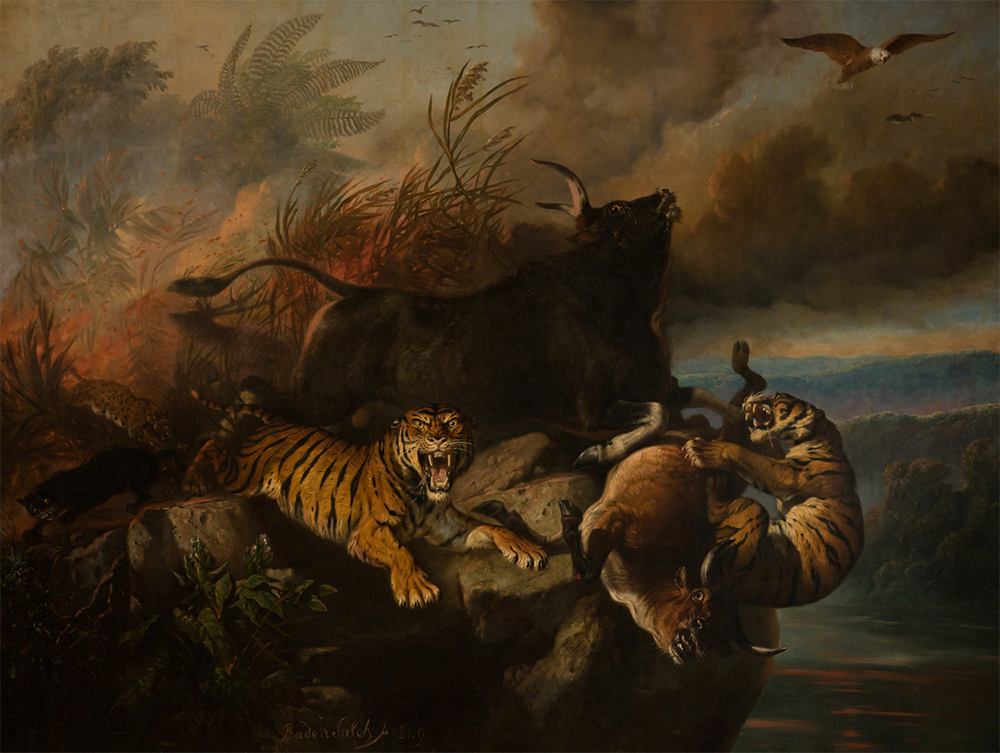
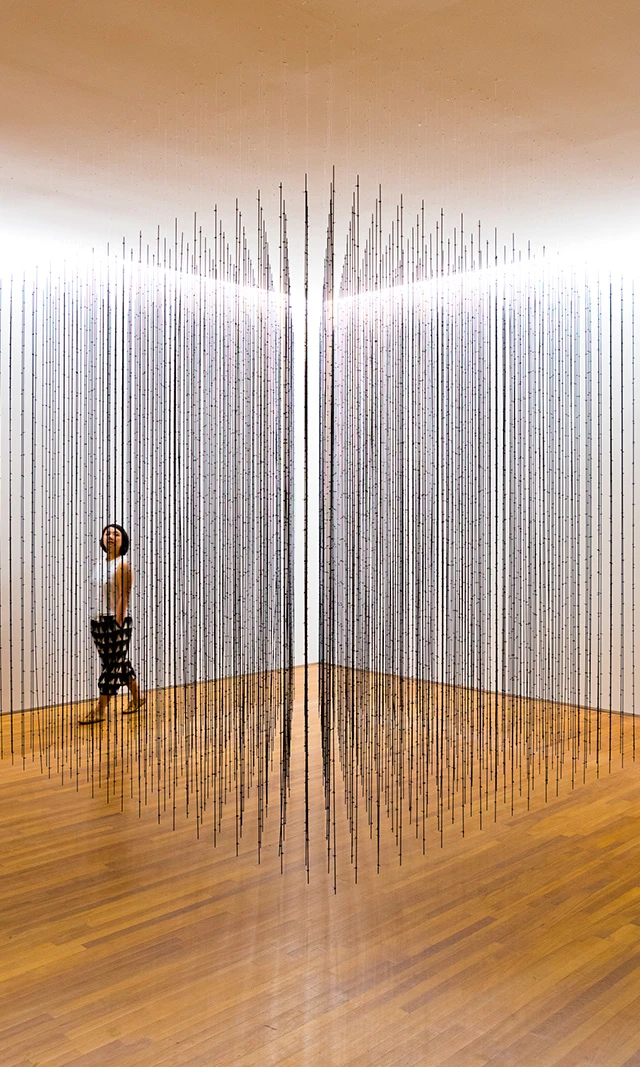
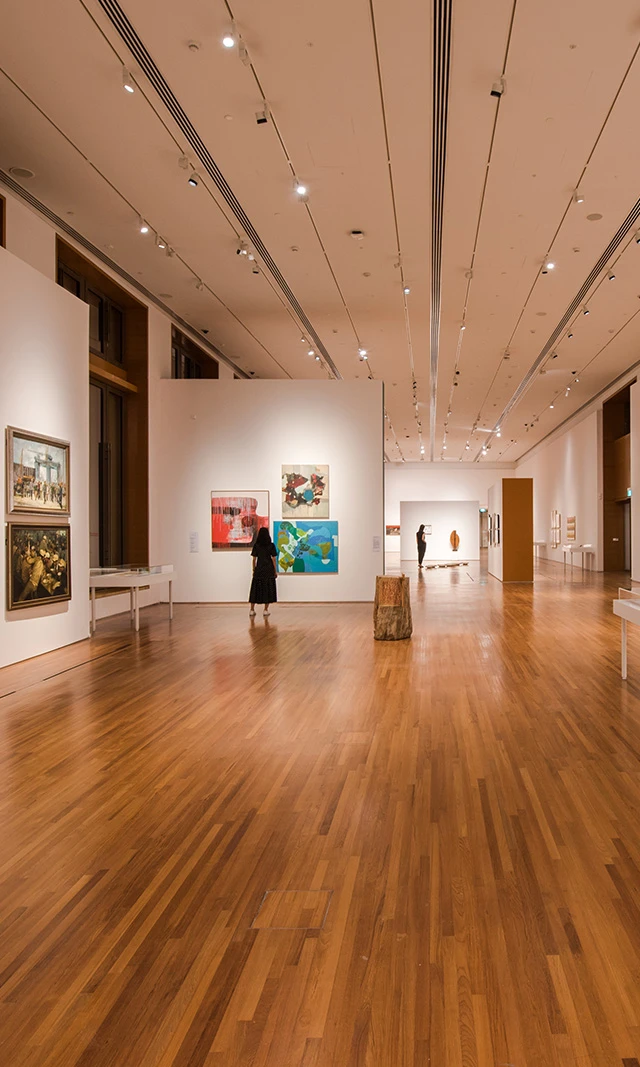
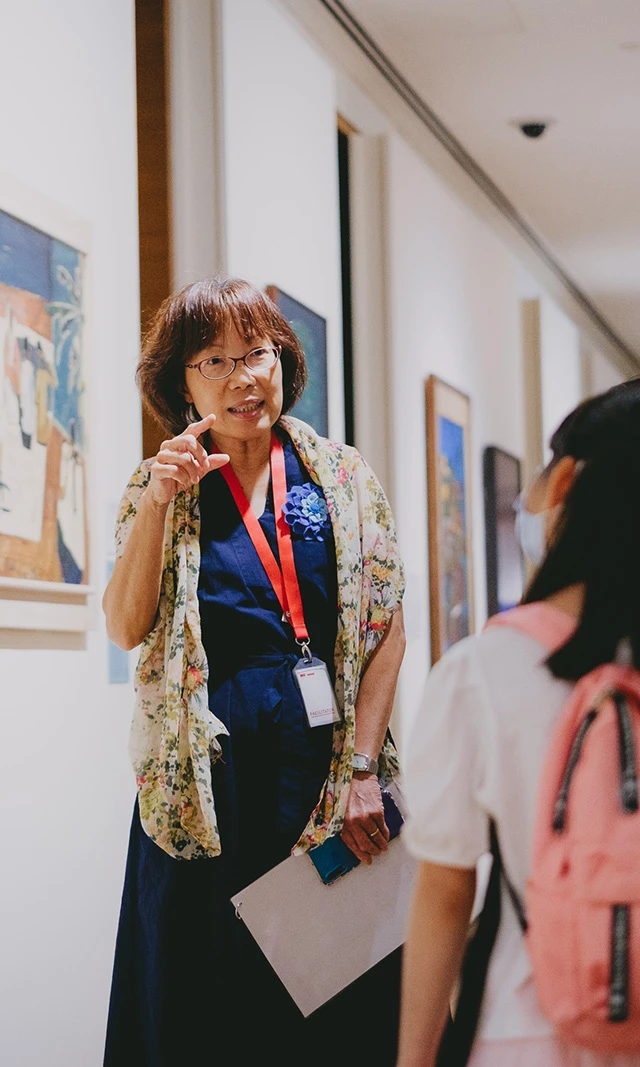
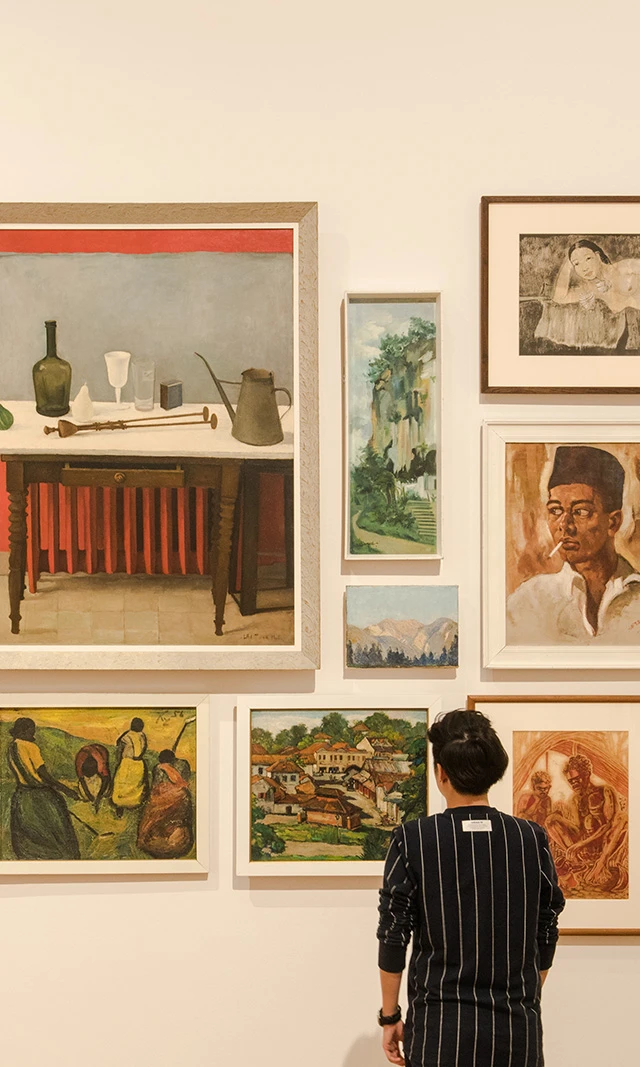
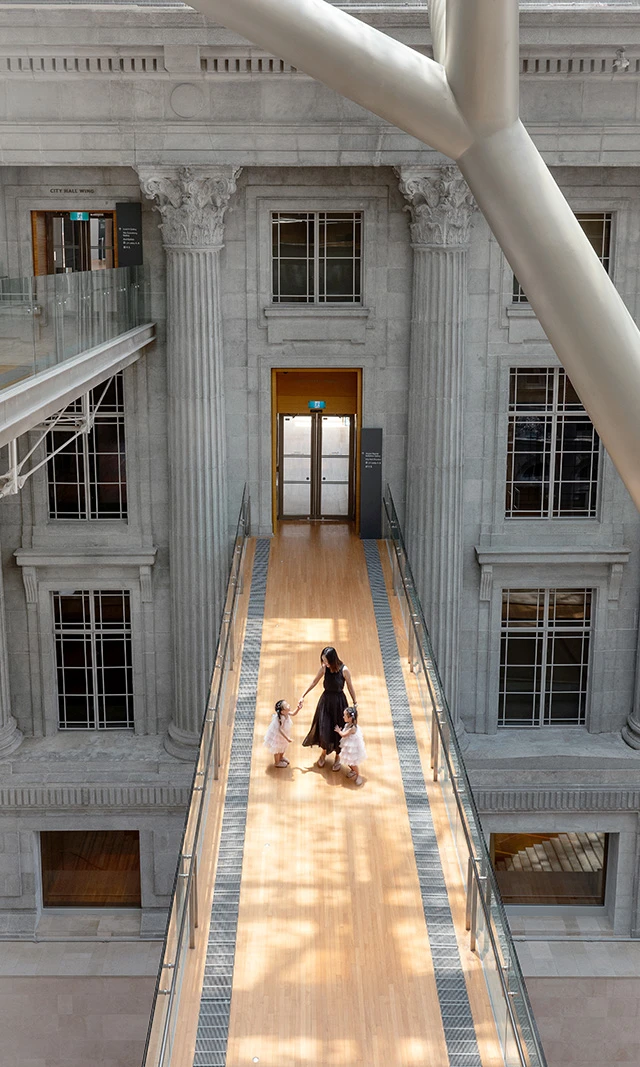
-min 1.png)

